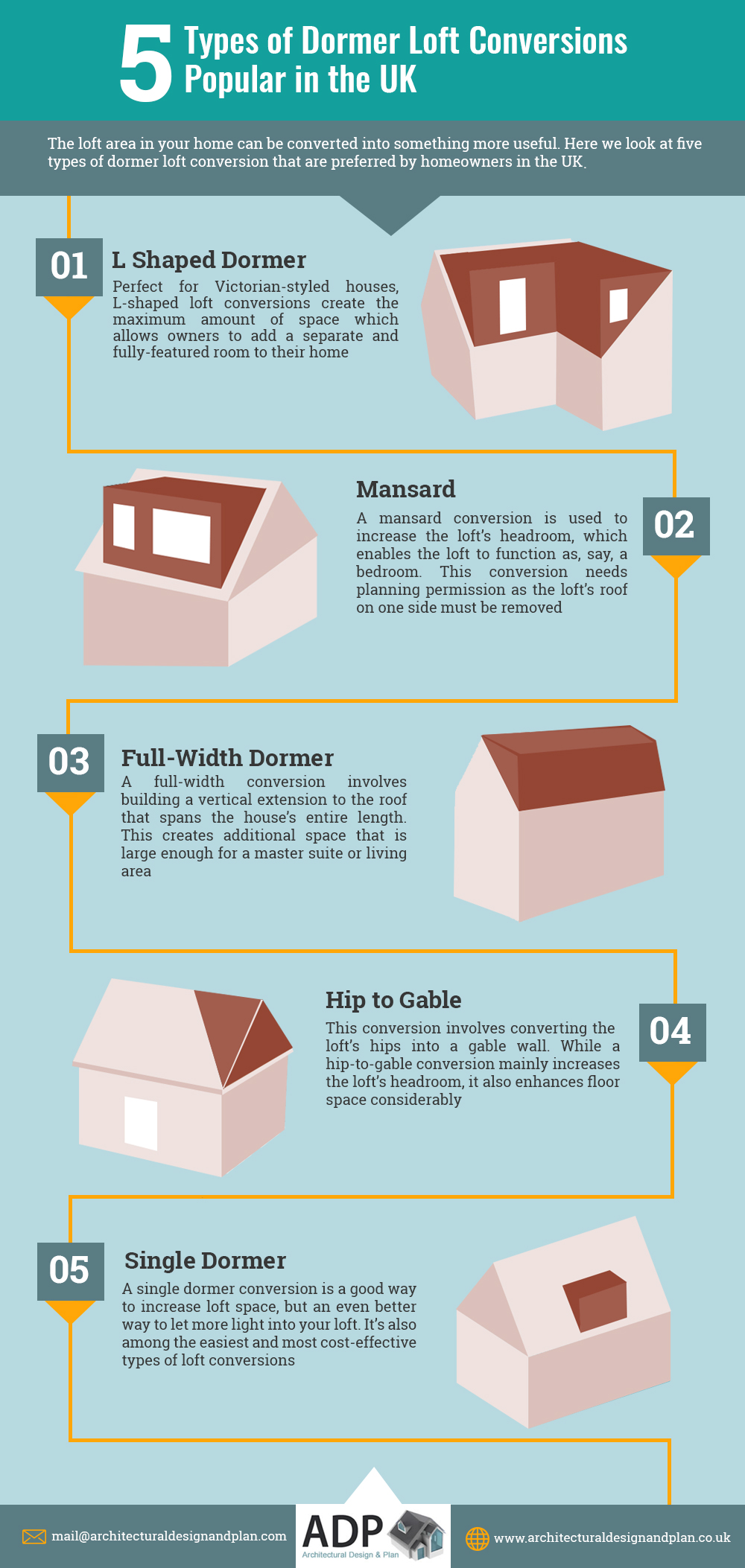In the last few years, loft conversions have become popular with homeowners in the UK. Industry experts attribute this rising popularity to ever-increasing home prices and the growing needs of UK households. As their families grow, more homeowners are looking to move into bigger homes. Thanks to soaring home prices, however, most of these homeowners are opting for a loft conversion instead. Among the benefits of loft conversions are greater convenience and a low cost.
Architectural designers can do amazing things these days with your attic or loft space. A quick web search for loft conversion ideas gets you thousands of results, which is a sign of how popular dormer loft conversions are with UK homeowners. But before you start thinking about what you are going to do with your loft, you must choose which type of dormer extension you want. This infographic helps you understand what each type of dormer loft conversion involves.
L-shaped dormer loft conversions are perfect if your home is built in the Victorian style. Among the different types of dormer loft conversions, L-shaped ones are known to create the maximum amount of space. By converting your loft into an L-shaped dormer, you can create an entirely new bedroom, office, bathroom or any other living area.
If L-shaped loft conversions create the most amount of overall space, mansard conversions create the most headroom of any type of dormer loft conversion. A mansard loft conversion is versatile and needs very little structural reinforcement. However, since it involves removing the loft’s roof entirely on one side, a mansard conversion requires planning permission. But when you consider the benefits it offers, the hassle of getting a permit is worth it.
A full-width dormer conversion runs along the length of your house while vertically extending from your roof. This type of dormer conversion increases your loft space substantially. Typically, homeowners prefer a full-width dormer conversion if they want to create a luxurious living area or even a fully-equipped suite.
On the lower end of the complexity scale are hip-to-gable and single dormer loft conversions. Architectural design plans for the former involve converting the hips (which are your roof’s sloped edges) into a proper gable wall. The headroom is the single biggest beneficiary of hip-to-gable conversions although the usable floor space increases significantly as well.
Likewise, single dormer conversions are simple and yet, bring in a lot more natural light to your loft space. This helps convert a dark and cold area of your home into something warmer, brighter and more liveable.
If you’d like to know more about loft conversions and how to get one for your home, get in touch with us today. Architectural Design & Plan (ADP) is a leading designer of loft conversions in Essex and other nearby areas. Our architects and designers are always on call to help you with the nitty-gritty of converting your loft into a more usable, and livelier, space.
Do you need planning permission for a Dormer loft conversion?
For most loft conversions planning permission is not actually required, however, you will have to follow a certain amount of rules which were created by the general permitted development in England.
- The loft space will not be larger than 40 cubic metres / 50 cubic metres for detached + semi detached houses
- The loft conversion does not extend beyond the existing roof slope at the front of the house
- The loft conversion does not have any balconies, verandas or raised platforms
- The conversion is made using the same materials which built the house
- Any windows must be 1.7m above the ground
- Any windows must be obscure glazed
- Your home is in a residential area
- Must be set back at least 20cm from the original eaves
- It must not overhang the outer wall of the house


